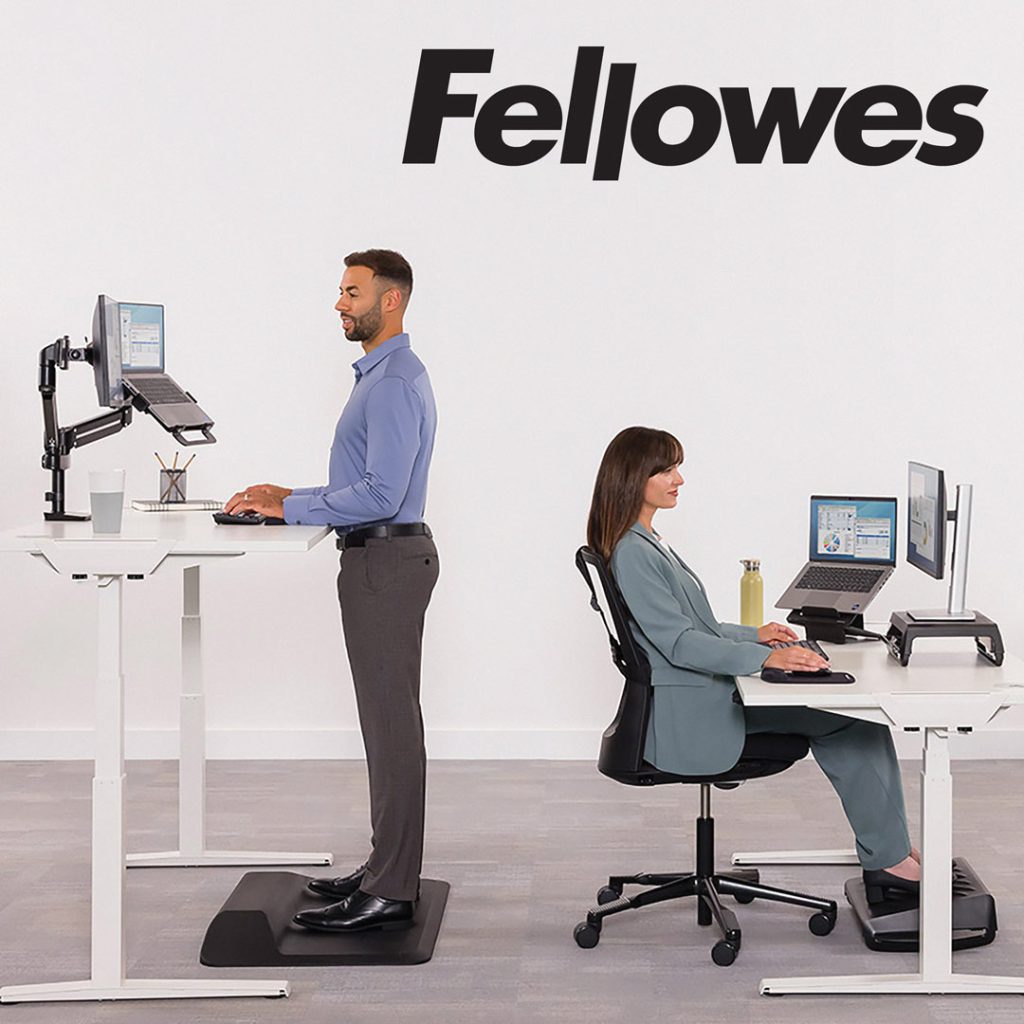Ergonomics puts human anatomy and behaviour at the heart of design. The field of ergonomics typically involves designing devices around the physical capabilities and comfort of the user. Ergonomic products are designed to minimise physical effort and discomfort and maximise efficiency.
In a 2021 survey carried out by Censuswide*, commissioned by Fellowes, 83% of respondents thought having a good ergonomic environment e.g., having the right desk, chair, monitor at eye level etc was important to their productivity. This is particularly significant for employers to consider, as 8 in 10 respondents think it is important that an employer invests in the ergonomic solutions they need to be productive at the office.
Fellowes introduced the 4 Zone Approach™ to help address the common issues relating to comfort and workspace design. This easy-to-follow guide is based on EN ISO 9241-5 and EU Directive 290/70, and breaks down the main aspects of the workstation into manageable sections, providing advice and tips on how each zone can be established ergonomically to create a healthier and happier workspace.
<strong>ZONE ONE – Prevent back tension</strong>
THE PROBLEM
Sitting in a chair without proper support can cause poor circulation and back discomfort.
THE SOLUTION:
Foot supports are designed to improve ergonomic positioning; supporting resting feet in the correct position keeps muscles relaxed and minimises cramping while improving circulation and blood flow.
Adjustable Height
Configures the foot support to achieve optimal ergonomic positioning; removing the pressure on the legs and lower back by correctly angling the feet and improving seated posture.
Rocking Motion
Provides a free-floating platform that encourages subtle movement in the feet for increased blood flow and relaxation over long periods.
Massage Surface
Designed to relieve stress and rejuvenate tired feet.
Non-Slip
Surface supports the user’s feet, removing further pressure from the legs.
Foot Adjustable
Foot rests can be adjusted by foot movement rather than leaning down to adjust, avoiding further stress on the back.
Back supports are designed to help eliminate aches and improve back posture by ensuring the spine is correctly aligned when in a seated position.
Support Types
Back supports are available as either Full Back or Lumbar variants. The type selected will depend on the body type of the user and the chair they are using.
Attachment Types
Back supports come with an elasticated or adjustable strap that allows users to set the tension and fit the support to most chairs.
Material Type
The fabric is typically foam, which moulds to the shape of the user for further support, or mesh, which promotes airflow and may be preferred in warmer working environments.
<strong>ZONE TWO: Avoid wrist pressure</strong>
THE PROBLEM
Typing on a keyboard for hours at a time can cause pain and discomfort to your wrists.
THE SOLUTION:
Wrist supports can help ensure your wrists stay in a neutral posture between typing and using a mouse, by resting the palm of your hand on them.
Material Type
Avoid hard contact with the desk with a wrist support. Available in Fabric for a softer rest, or Gel for a firmer support while being easier to clean.
Non-Skid
Ensures that the support/pad does not slip on the work surface.
Health-V™ Options
Some supports will have the option of Health-V™ Channel that has been designed to help combat the risk of carpal tunnel syndrome by reducing the likelihood of pressure on the median nerve.
<strong>Contact Us Today for all your Ergonomic Needs
Zones 3 & 4 to follow in a future blog.</strong>

